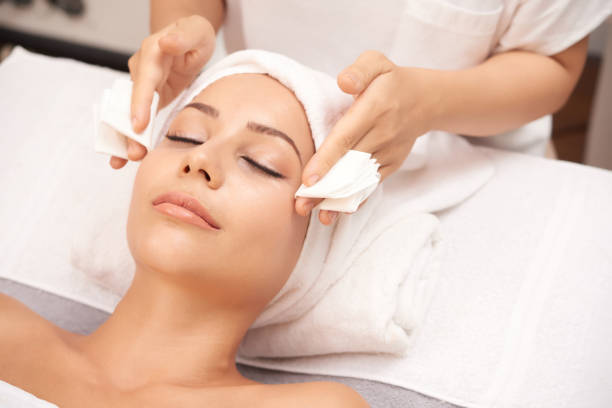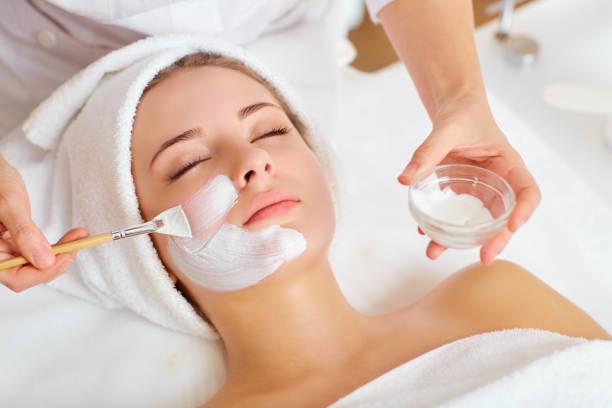Many estheticians will frequently advise getting a facial every four weeks. This is because it takes that long for skin cells to travel from the dermis to the skin’s surface, where they are naturally shed, and go through their entire life cycle of cell growth. When it comes down to it, however, your skin type really makes a difference.
How frequently should you actually get a facial? Does it depend on the particular skin issues you have? The answer is a little more complicated than just “yes” or “no.” To find out everything you need to know, keep scrolling.
Table of Contents
How Often Should You Get Facials?
With those considerations out of the picture, the standard advice is to get a facial every three to four weeks or once per month. Your skin has a lifecycle that lasts that long. Your skin cells regrow after three to four weeks.
This process is facilitated by facials, which also guarantee that your skin is always radiant.
Factors to Consider
Skin Care Goals
Working with an esthetician beginning at a young age is the best way to create a skin care regimen. It’s not always possible, though. No matter how long you’ve been dating, your esthetician will work with you to identify the products that suit your skin the best before probing further to address other issues.
Your skincare routine must adapt as you and your skin age. Your skin can be impacted by factors like smoking, sun damage, and other things. Your esthetician is qualified to handle such changes.
Your Skin Type
Your skin type is a key factor in determining how frequently to schedule facials. You will schedule facials more frequently if you have oily or acne-prone skin.
A monthly visit is advantageous for skin with blackheads, acne, and clogged pores. You can put your skin on a less frequent schedule as you notice improvements to help you manage these breakouts.
However, regular visits aren’t just for acne. Appointments can also be made on a monthly basis for people with clear skin.
You may limit your facials to every two months if you have sensitive skin, or however often you feel is most effective.
Specific Treatments
Your esthetician might actually increase the frequency of your treatments depending on your skin problems. Let’s say, for instance, that you would profit from peels or eye enhancements. Such procedures are typically carried out in a series, necessitating more frequent consultations with your esthetician until the process is finished.
Rejuvenation Speed
You’ll need a facial less frequently as you get younger. This is so because younger skin regenerates more quickly than more mature skin. But even if you’re young, getting more facials can often be helpful if you have skin issues. However, as you get older, you’ll need to have your skincare regimen redesigned by an esthetician.

Basic Components of a Professional Facial
Skin Analysis
The esthetician will start by conversing with you and gathering information from you in order to decide on the most effective course of action for your skin.
Deep Cleanse
This offers a clean canvas on which the subsequent treatments and goods can be applied.
Exfoliation
The most common types are mild exfoliating acid or enzyme peel, ultrasonic exfoliation, microdermabrasion, or biobrasion.
Steam
The circulation is improved, which facilitates manual extractions.
Massage
Estheticians are trained in facial massage, which promotes healthier, more radiant skin by boosting circulation. If you have trouble with a dull complexion, this is helpful. If you have severe breakouts, you might want to skip this step because it might be too stimulating (skipping it would also free up more time for the esthetician to perform extractions).
Manual Extractions
In order to remove blackheads and clogged pores, the esthetician uses extractions.
Mask
There are many various mask options, just like exfoliation. After determining the particular requirements of your skin, your esthetician will be able to select the best one for you.
These are the fundamental steps in a facial, but many additional services can be added to improve results. Just a few examples of equipment include high frequency, LED light therapy, microcurrent, and microcurrent with microcurrent.
5 Surprising Benefits of a Professional Facial
Expert Skin Analysis
Even if you’re satisfied with the way your skin looks right now, an esthetician can help you understand your specific skin type and advise you on how to take care of it to get the best results.
Professional-Strength Exfoliation
While there are many excellent at-home exfoliating products, if you want to smooth the texture of your skin or lighten sun and acne scarring, you might benefit from something more powerful.
A Scope for Skin Cancer
An expert esthetician can spot skin changes that you might be omitting and encourage you to undergo routine skin cancer screenings.
Professional Guidance
It’s crucial to use the right skincare products, and sometimes it helps to remove the element of guesswork. When it comes to developing a successful home care routine, an esthetician can provide advice. This could include changes to the skin caused by the seasons, the environment, hormones, and aging.
Stress Release
Never undervalue the importance of taking some time for yourself!
Summary
Today’s facials are more customized and focused on achieving results than ever before. Even if you don’t have any of the three conditions mentioned above, if you want to take the best care of your skin possible, we advise making facials a regular part of your skincare regimen. Simply put, using a good at-home routine for your particular skin type and entrusting your face to a skincare expert can work wonders.



